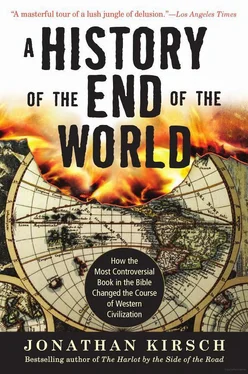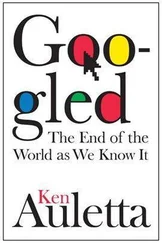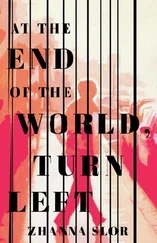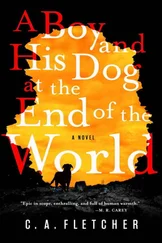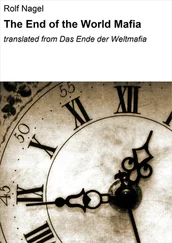Here, then, is yet another example of the dark side of the apocalyptic idea—the fear and loathing of the “other,” and the insistence that the “other” must convert or die. The fact that the bloodthirsty tale was told by Osama bin Laden is chilling, of course, but the same idea can be teased out of both Jewish and Christian apocalyptic tradition. Indeed, Jerry Falwell was embracing the same hateful notion when he wondered out loud whether God had permitted the terrorists to carry out their attacks on 9/11 in order to punish America for its unforgivably easygoing attitude toward pagans, abortionists, feminists, gays, lesbians, the ACLU and the People for the American Way. 139
“Mass movements can rise and spread without belief in a god,” observed longshoreman and folk philosopher Eric Hoffer (1902–1983) during the most anxious days of the Communist witch hunts of the McCarthy era, “but never without belief in a devil.” 140
The book of Revelation, as we have seen, insists that humankind has always been confronted with a simple choice—good or evil, the Lamb or the Beast, God or Satan, and the wrong choice is punishable not merely by death but by eternal damnation. Like other expressions of religious true belief, which looks on the remarkable diversity of human faith and practice and declares all but one as error, sin, and crime, the apocalyptic idea may be hardwired into the human imagination. But the long, strange, and ultimately tragic history of the book of Revelation—the history of a delusion—proves that it is always a cruel idea and sometimes a deadly one.
Not every apocalyptic cult, of course, expresses itself in the familiar words and phrases of Revelation. The so-called Ghost Dance movement, which arose among the Native American tribes on the western frontier in the late nineteenth century, focused on a home-grown version of the millennial kingdom: “The spirits of the dead would return, the buffalo would once again be plentiful, and the earth would tremble.” 141At its peak, the self-styled prophet of the Ghost Dancers, a messianic figure called Wovoka, taught his followers that their exertions would inspire the ancestral spirits to drive off the white settlers who threatened the Native Americans with both cultural and physical extermination.
Even the Ghost Dancers, however, owed something to the apocalyptic and messianic traditions of Judaism and Christianity, which they apparently picked up from the preaching of Christian missionaries and then translated into their own spiritual vernacular. And, notably, the Ghost Dancers discovered for themselves the peril that has always threatened apocalyptic preachers and their followers, including the Maccabees, the Zealots, and the early Christians. The military authorities who were charged with maintaining law and order on the frontier regarded the Ghost Dance movement as a spooky and dangerous form of insurrection, and they resolved to wipe it out in a series of punitive expeditions that culminated in the notorious massacre at Wounded Knee in 1890.
The Ghost Dancers, in fact, fit neatly into the theoretical model that has been applied to Daniel, Revelation, and the other ancient apocalyptic writings. The promise that the end of the world is nigh, as we have seen, is supposedly intended to “hearten the faithful in the time of affliction and persecution” and to console “those engulfed by suffering and overwhelmed by dread.” 142And these words accurately describe the predicament of the Native Americans who performed the Ghost Dance to drive off the white settlers who were conducting not merely a culture war but a war of extermination. Indeed, the Ghost Dancers are far more appropriately described as the victims of affliction and persecution than, say, the Puritans, the Millerites, or the Christian fundamentalists of our own era, all of whom have been privileged to live their lives in perfect comfort and safety.
That is why scholars have found it necessary to fine-tune the apocalyptic model by pointing out that persecution may be entirely in the mind of the beholder. “Whatever his actual economic situation,” writes Adela Yarbro Collins about the man who wrote the book of Revelation, “the author or editor seems to feel that he is a victim of injustice.” 143Or the self-imagined victim seethes with resentment toward someone he regards as better off than himself, a phenomenon that scholars call “relative deprivation” or “status anxiety.” 144Or the victim is unsettled by some cultural or political change that her zealous true belief will not allow her to accommodate, a description that probably best describes the first readers and hearers of Revelation as well as the otherwise comfortable Christian fundamentalists in modern America. And sometimes the whole apocalyptic phenomenon is more nearly a psychiatric disorder than a spiritual calling.
“Classic millenarians, from self-flagellating medieval peasants to Sioux Ghost Dancers,” quips Damian Thomson, “are often people who, if not clinically mad, have reached what George Rosen has called ‘the wilder shores of sanity.’” 145
Thus, for example, the members of the Heaven’s Gate cult in Southern California came to believe that a spacecraft was hidden in the tail of the Hale-Bopp comet, full of aliens on a mission to destroy the world, and they convinced themselves that they would be able to escape the apocalypse by elevating themselves to a higher plane. Thirty-nine members of the cult packed their bags, put on new tennis shoes, stuffed their pockets with five-dollar bills and rolls of quarters, and then supped on applesauce spiced with phenobarbital before putting plastic bags over their heads to ensure death by suffocation if the self-administered poison did not kill them first. Their source of inspiration was science fiction rather than scripture, of course, but Heaven’s Gate, too, demonstrates the terrible power of the apocalyptic idea (and the mass media) on a disordered mind.
“We watch a lot of Star Trek, a lot of Star Wars, ” says one cheerful member of Heaven’s Gate in the videotaped messages that they left behind in 1997. “It’s time to put into practice what we have learned.” 146
Now and then, it is simply impossible to make any meaningful distinction between apocalyptic vision, psychological dysfunction, and mass murder. The Japanese cult called Aum Shinrikyo, for example, embraces a strange blend of Buddhist, Hindu, and Taoist beliefs along with “predictions from the book of Revelation and a dose of anti-Semitic conspiracy theory.” 147The founder, Shoko Asahara, reportedly taught his followers that Armageddon was fast approaching, and ordered them to assemble their own arsenal of chemical and biological weapons. In 1995, they put their weaponry to a practical test by setting off canisters of sarin nerve gas in the subways of Tokyo, thus taking the lives of twelve victims and injuring thousands more.
“For ye have the poor with you always,” says Jesus, and he might have said the same of the doomsayers. 148Most of them will remain invisible to the rest of us, caught up in their own complicated and impenetrable fancies about the coded meanings of the Bible. Many others will continue to advertise their own visions in the public prints, on radio and television, and over the Internet; a Google search for “Book of Revelation,” for example, retrieves more than 1.6 million “hits.” And a few, of course, will always succeed in claiming the attention of the whole world, if only for fifteen minutes, because of some ghastly act, whether suicidal or homicidal, that is meant to hasten the end of the world.
Iknow the ending, to paraphrase the credo that appears in the very first sentence of the book you are now reading, but whether or not God wins is somewhat less certain nowadays.
Читать дальше
